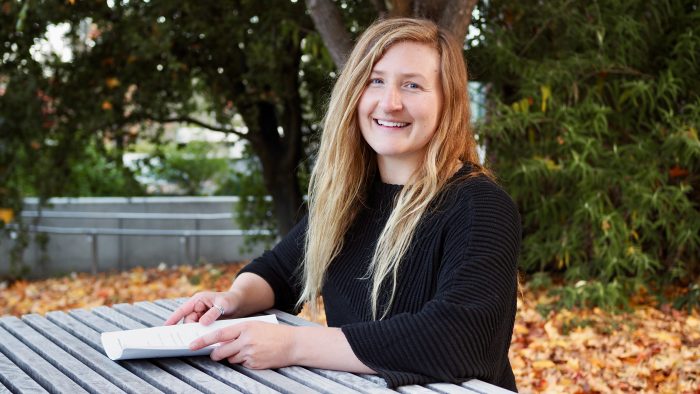Jonathan Brown with Centre researchers.

An Aussie scientist has led a global research effort using data from ice cores, trees, lakes, corals, and caves to deepen our understanding of weather and climate over the Pacific Ocean.
The research, published in Nature, has found that the Pacific Walker Circulation (the atmospheric part of the El Niño Southern Oscillation – a major influence on global weather) has changed its behaviour in the industrial era – in ways that they didn’t expect.They also found that volcanic eruptions can cause an El Niño-like weakening of the Pacific Walker Circulation.
Dr Georgy Falster, a climate scientist at the ARC Centre of Excellence for Climate Extremes and Australian National University has a passion for shining a new light on old data.
“I was very interested in science from a young age and I’ve always been very interested in the natural world” says Dr Georgy Falster.
“Even if there’s just a little bit of information stored up in an ice core from Antarctica or a tree from China, we can extract that and use that to help us figure out how the Pacific Walker Circulation has changed. I take many datasets that have been produced by different scientists all over the world, over many years, and put those into a big pool of data to see what new things I can pull out.”
Dr Falster worked with colleagues from Washington University in St. Louis, University of Hawaiʻi and the University of California to conduct the research, using data collected by scientists all over the world. She hopes that her work can encourage more collaborations and new ways of tackling scientific challenges in the climate.
“Being a climate scientist is incredibly rewarding. I know every day that what I’m doing is helping to figure out what’s happening with the climate system” says Dr Falster.
“One of the things I particularly like about my job is teaching. It’s really exciting to see how much students care, how interested they are in what’s happening with the climate and they’ve got real drive to do something about it. The thought of having a great group of students to work with who are following on from the research that I do, building and improving on it, that’s wonderful” says Falster.
The paper is in Nature. Dr Falster is a part of the ARC Centre of Excellence for Climate Extremes – a joint initiative of leading Australian universities and climate scientists, fostering the next generation of climate science leaders. This research was also funded by the US National Science Foundation.
